Have you ever thought that making fresh coconut milk was difficult? Well, think again! Let's learn how to make coconut milk in 6 different ways right in your own kitchen. All very easy and fast!
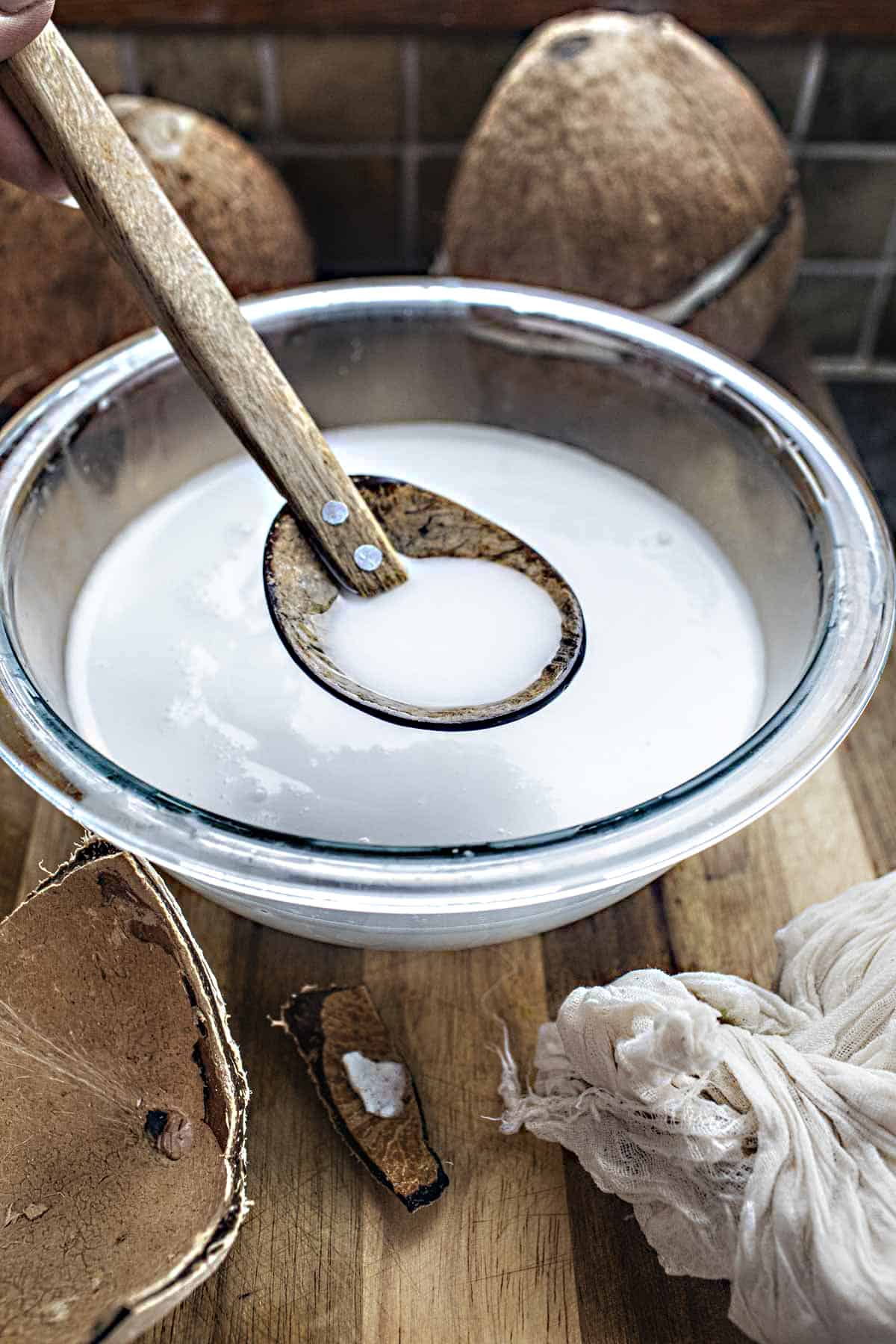
Check out this helpful guide to learn 4 different ways to open a coconut. Then, use your coconut milk to make these recipes: Thai coconut ice cream, Choo Chee salmon, Pad Prik Khing with shrimp, Thai cod curry, authentic green curry, and Satay sauce.
Jump to:
- Coconut Milk in Thai Cooking
- Why Make Your Own Coconut Milk
- Ingredients for Making Coconut Milk
- Important Tips for Making Homemade Coconut Milk
- How to Make Coconut Milk
- Tips and Tricks for the Perfect Coconut Milk
- Thai Recipes Using Coconut Milk
- Where Can I Buy Fresh Coconut?
- Helpful Kitchen Tools for This Recipe
- Frequently Asked Questions
- How to Make Coconut Milk (6 Ways!)
- Making Coconut Milk in My Village
- Related
- Thai Kitchen Resources
Coconut Milk in Thai Cooking
In Thai cuisine, coconut milk is not just an ingredient. it's a culinary treasure. Its rich, creamy texture elevates dishes like Green Curry and Tom Kha Gai.
Returning to canned coconut milk will be hard once you learn how to make homemade fresh coconut milk!
Why Make Your Own Coconut Milk
- Fresh and Delicious: When you make your own coconut milk, you can enjoy the amazing taste of fresh ingredients in your cooking.
- No Hidden Nasties: Store-bought coconut milk often contains additives and preservatives. By making your own, you have complete control over what goes into it.
- Customize to Your Liking: Adjust the richness and thickness of your homemade coconut milk to suit your taste and recipe needs by adding more or less water to your milk mixture.
- Save Money: Buying commercial coconut milk can be costly, but making your own can help you save a lot of money.
- Great for Special Diets: If you're lactose intolerant or following paleo or gluten-free diets, homemade coconut milk is a wonderful alternative to dairy products.
- Health Benefits: Coconut milk is rich in fatty acids and offers many health benefits, making it a wonderful addition to your diet.
- A Must-Have for Coconut Lovers: If you're a coconut fan, making coconut milk opens up a world of delicious coconut-based recipes.
Ingredients for Making Coconut Milk
These are the 6 ingredients we will be using to make homemade coconut milk. Note that each method has a recommended use for specific recipes.
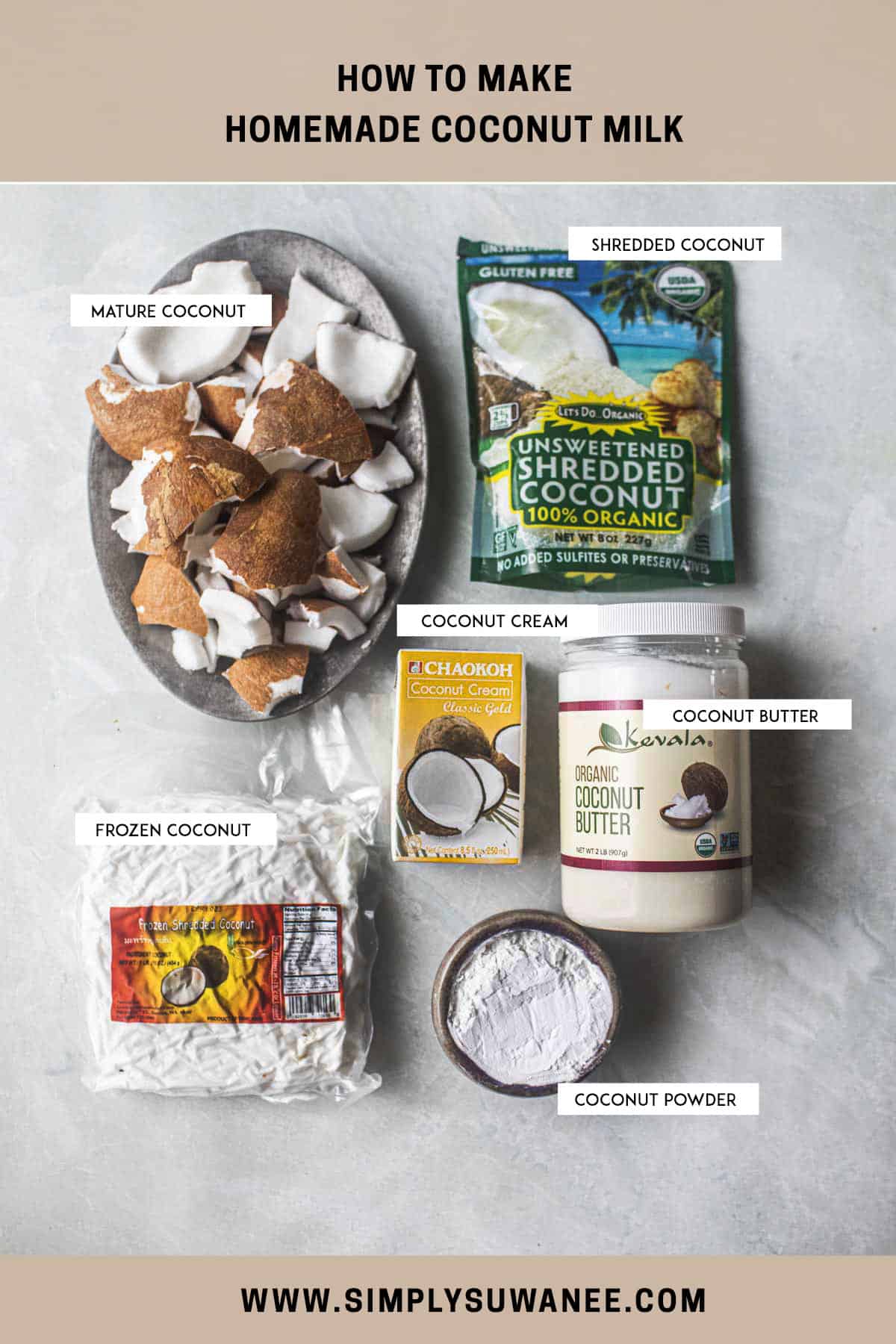
- Fresh Mature Coconut: The heart of coconut milk, providing the base for extraction. This is my favorite method.
- Desiccated or Shredded Unsweetened Coconut: A quick and convenient option for coconut milk preparation.
- Coconut Powder: A concentrated form, offering instant coconut milk.
- Coconut Cream: Thick and rich, perfect for indulgent recipes.
- Frozen Coconut Flesh: Convenient for achieving a creamy texture in smoothies or desserts.
- Coconut Butter is a unique approach resulting in a different but equally delightful coconut milk and oil mixture.
Important Tips for Making Homemade Coconut Milk
1. Before you begin, I strongly recommend reading my blog post on how to crack open a coconut. I've included step-by-step instructions with helpful photos for visual guidance.
2. It's important to note that my coconut milk recipe is designed to be thick and creamy, just like traditional Thai coconut milk. Many recipes online are too diluted, so be mindful of this. The water-to-coconut milk ratio is specifically tailored for my Thai recipes on my blog, providing the perfect consistency without any added, unlike preservatives like store-bought coconut milk.
3. Remember, the water or juice inside the coconut should not be used when making coconut milk. Instead, you can enjoy it as a refreshing drink or use it to make agar jelly.
4. For this homemade version of coconut milk, we will be using mature coconuts, not the young ones. Opt for brown coconut rather than green ones. Save the young Thai coconuts for their sweet water and enjoy them as tasty snacks.
How to Make Coconut Milk
1. From a Fresh Coconut
The best coconuts for making coconut milk are from mature whole coconut. Learn how to pick the best coconut for making your own homemade coconut milk with these helpful tips.
Young coconuts are not recommended for this homemade coconut milk recipe as there's not enough cream or milk like those of fresh mature coconut meat.
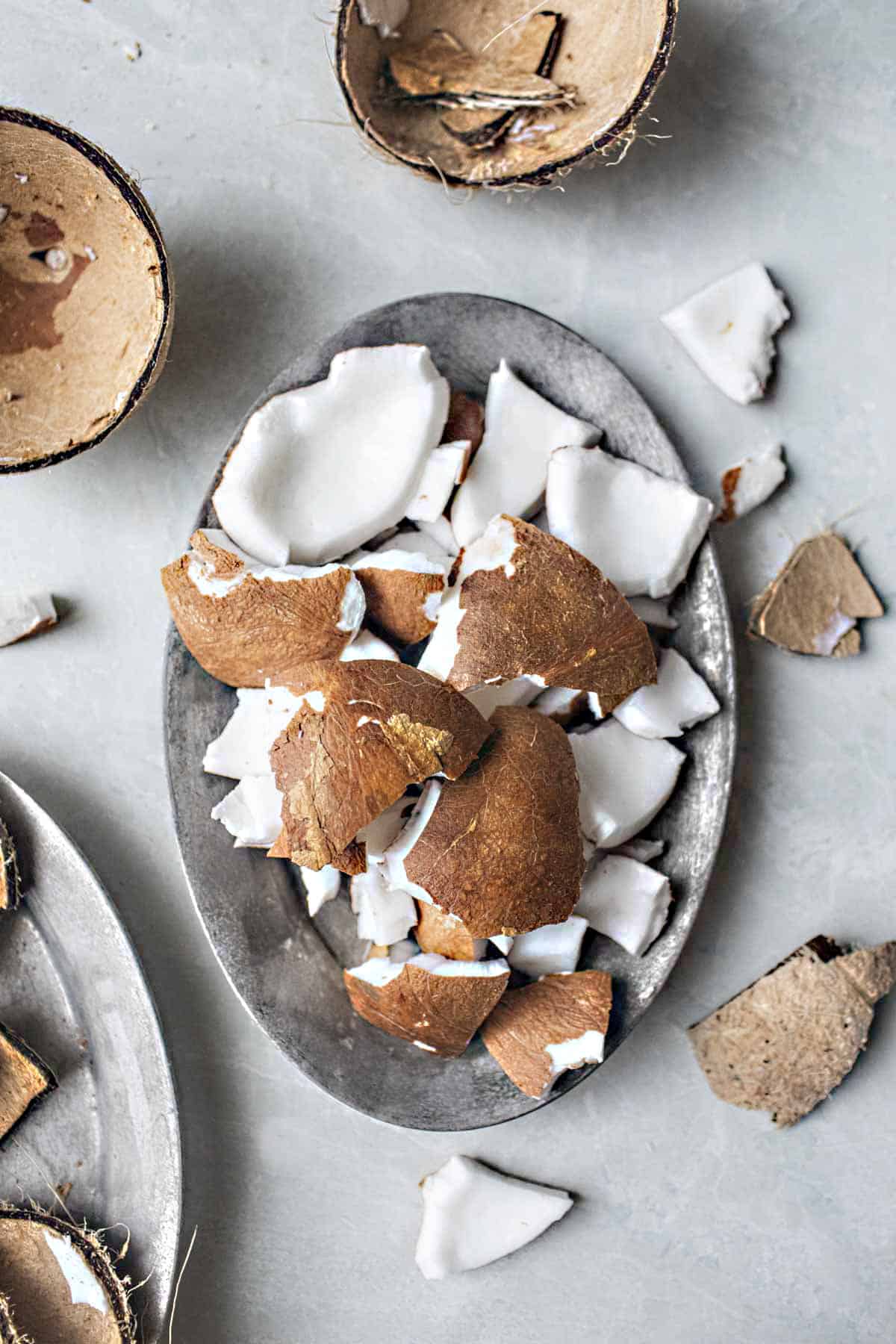
Tools Required: Blender, muslin cloth.
Ideal For: Curries, soups and desserts
Ingredients:
- Coconut meat. Use this coconut cracking post to help with opening a coconut.
- Warm water

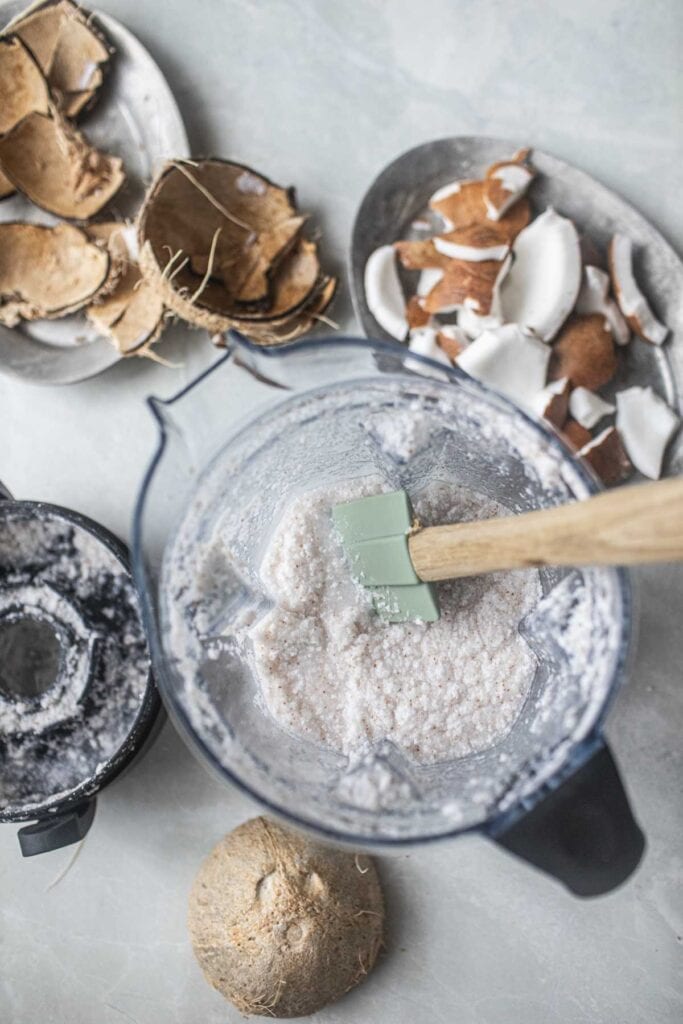
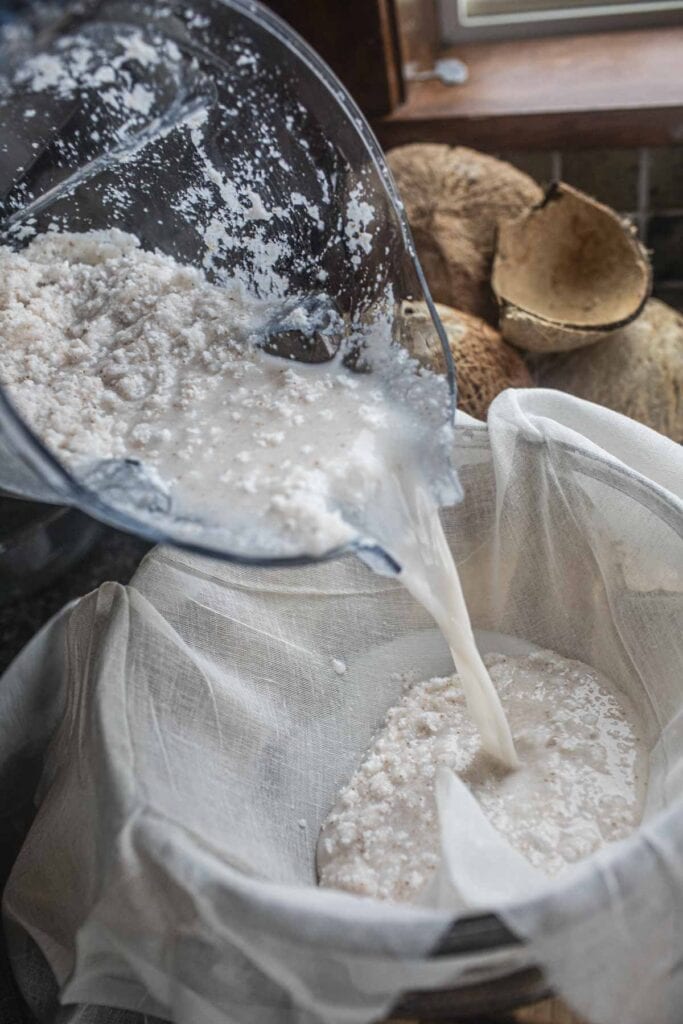

Steps:
1. Remove the coconut meat from the coconut shell and drain the coconut water. Use a sharp knife to shave off the brown skin from the coconut pieces, keeping only the white flesh.
2. Slice the coconut flesh into small pieces and add them to a powerful food processor. Add enough warm water to cover the top of the coconut.
3. Blend the coconut flesh with the warm water until smooth. Place a muslin or cheesecloth over a large mixing bowl and pour the coconut mixture to strain the milk.
4. Tie the top of the cloth tightly and squeeze out the milky liquid. Congratulations, you've made your own DIY coconut milk!
2. From Desiccated/Shredded Coconut
Desiccated coconut is made by drying out coconut flakes to remove moisture. To rehydrate the flakes, we need to add water. It's important to use unsweetened coconut flakes for this. We want to make unsweetened coconut milk without any added sugar.
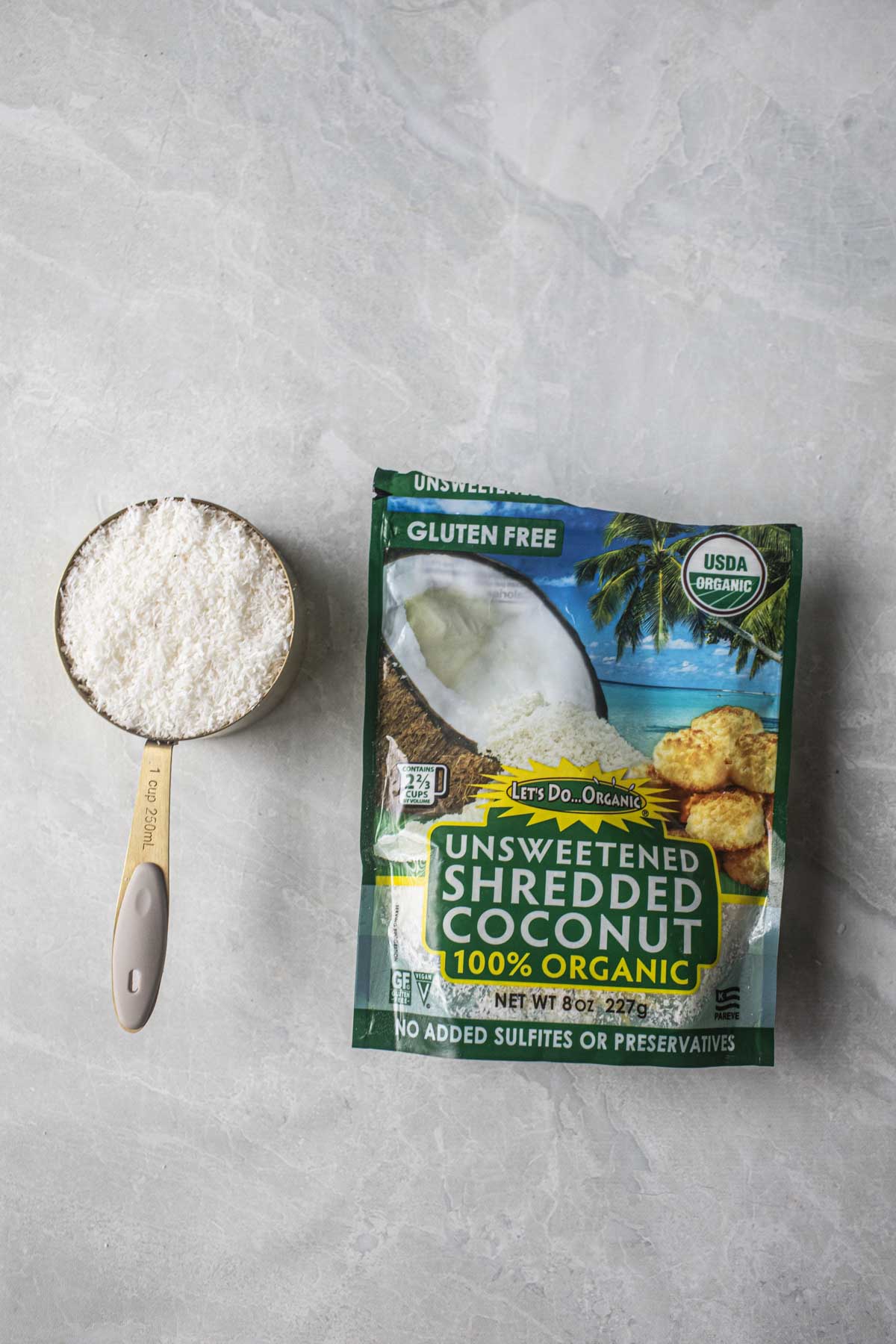
Tools Required: Blender, hot water, nut milk bag.
Ideal For: Versatile use in both sweet and savory dishes.
Ingredients:
- Desiccated coconut flakes. These can be found at most grocery stores.
- Warm water


Steps:
- Soak the dry coconut flakes in warm water for 10 minutes.
- Add the entire thing to a medium food processor. Blend shredded coconut with water until smooth but still flakey.
- Strain using a nut milk bag, muslin cloth, or cheesecloth.
3. From Frozen Shredded Coconut
You can get frozen shredded coconut at the Asian market, conveniently packed in vacuum-sealed bags in the freezer section. These small pieces of fresh coconut are perfect for various uses.

Tools Required: Blender, hot water.
Ideal For: Smoothies, desserts, beverages.
Ingredients:
- Frozen coconut flesh. Find these at the Asian markets in the freezer section
- Warm water

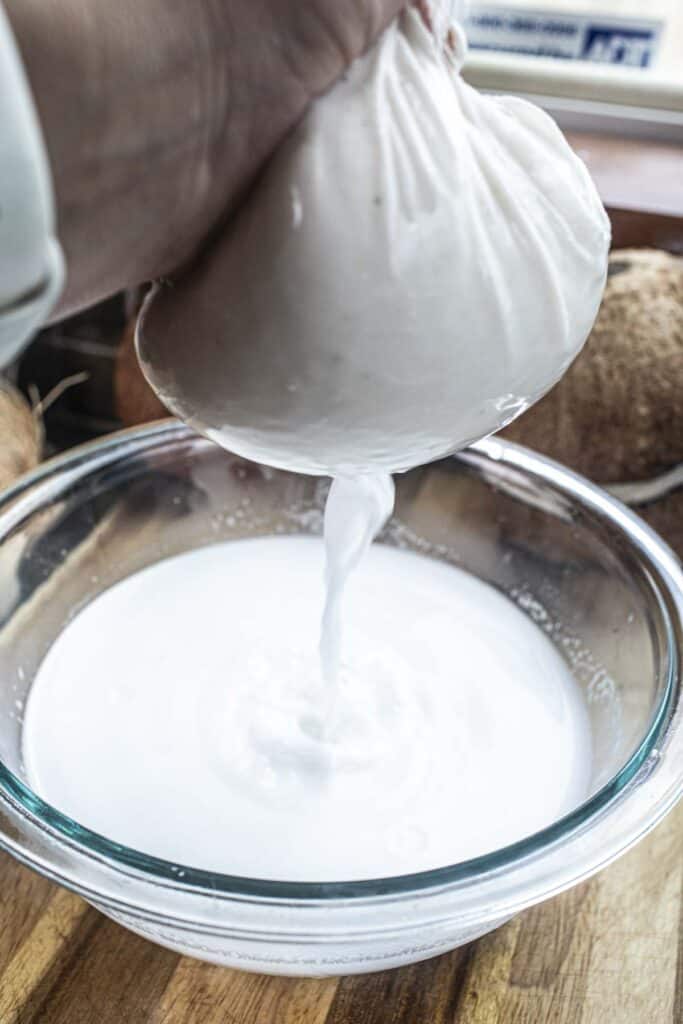
Steps:
1. Blend frozen shredded coconut with warm or semi-hot water in a medium-sized food processor. Blitz until smooth and milky with chunks of coconut pieces.
2. Strain using cheesecloth, muslin sheets, or nut milk bags.
Recipe Tips:
If you have any leftovers, simply store them in a zip-lock bag for future use. Personally, I find this method to be the second-best way to make homemade coconut milk.
Frozen shredded coconut as a backup is always handy when I run out of coconut milk from my pantry. They are also a great addition to my coconut products when I want to throw some coconut chunks in some recipes.
4. From Coconut Powder
Coconut milk powder is made from dried coconut milk! It has been dehydrated for various uses. Many Indian and Malaysian recipes use coconut powder. It is the simplest and easiest way to make coconut milk - no blending, straining, stir and use!

Tools Required: Muslin cloth, cheesecloth or tree milk bag, hot water.
Ideal For: Quick coconut milk needs.
Ingredients:
- Coconut powder
- Water
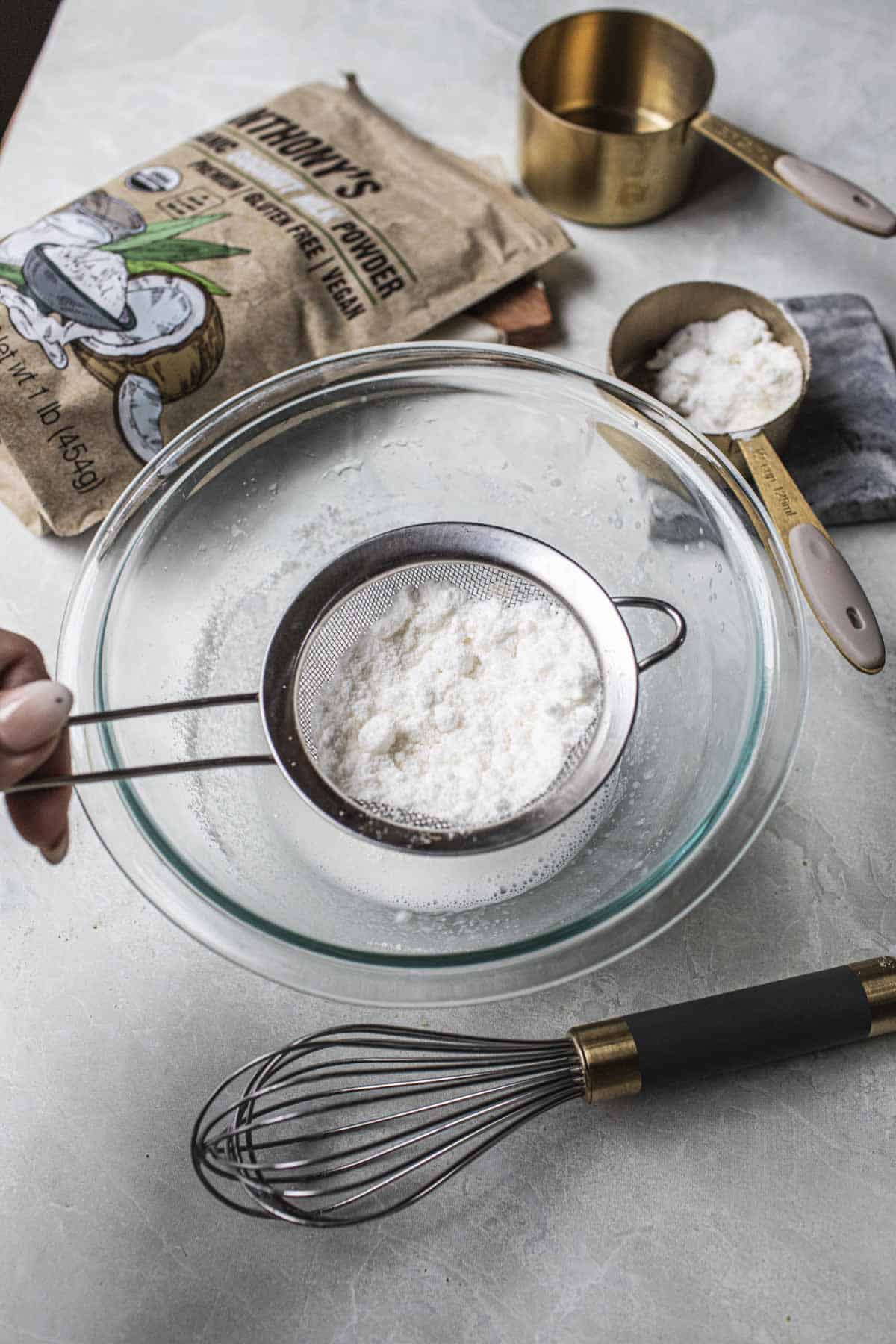
Steps:
1. Mix coconut powder with hot water in a medium mixing bowl. Use a whisk to stir. Allow it to sit for 10 minutes. Use a small wire mesh strainer to help break up the power clumps.
2. Before straining, stir the powder mixture one more time to lift the coconut milk deposit at the bottom of the bowl. No blender is needed for this method.
5. From Cartoned or Canned Coconut Cream
Coconut cream is the thick coconut milk at the top of your cans. To make coconut milk, simply dilute the coconut cream with water. Coconut cream is the first press of coconut milk, resulting in a rich and creamy texture perfect for heavier dishes and desserts.
On the other hand, coconut milk is the second press with a bit more water and coconut flesh, creating a thinner milk commonly used in curries, soups, and stir-fried dishes.

Tools Required: Muslin cloth, cheesecloth or tree milk bag, hot water. water.
Ideal For: 1 ¾ cups of coconut milk
Makes: 1 ¾ cups of coconut milk
- Coconut cream (1 small Chao Koh carton)
- Warm water

Steps:
- Dilute canned coconut cream with water in a bowl. Whisk together for a minute. That's it. Done. Super easy!
6. From Coconut Butter
Coconut Butter is not my favorite. (; I admit I almost didn't include this method because it doesn't feel very Thai. But, surprisingly, it has some benefits.
Basically, it's like diluted coconut oil, perfect for making salad dressings that need a hint of coconut milk.
It's also great for marinating meats like satay chicken, making satay sauce, or marinating moo ping or Gai yang. However, it's not ideal for soups or curries.
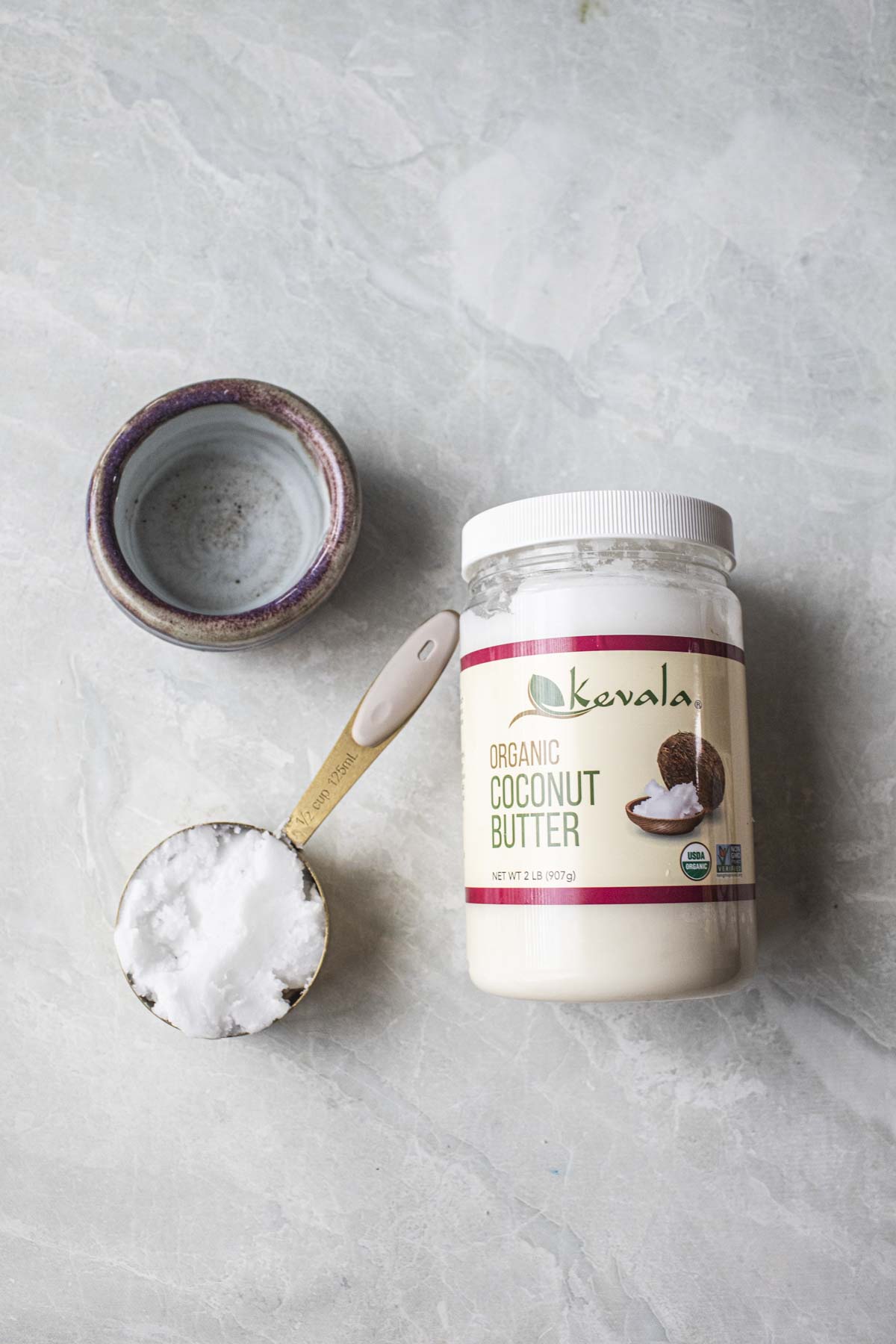
Tools Required: Blender, hot water, fine mesh strainer.
Ideal For: marinating meat or use in coconut milk bases designs and sauces
Ingredients:
- Coconut butter
- Warm water.

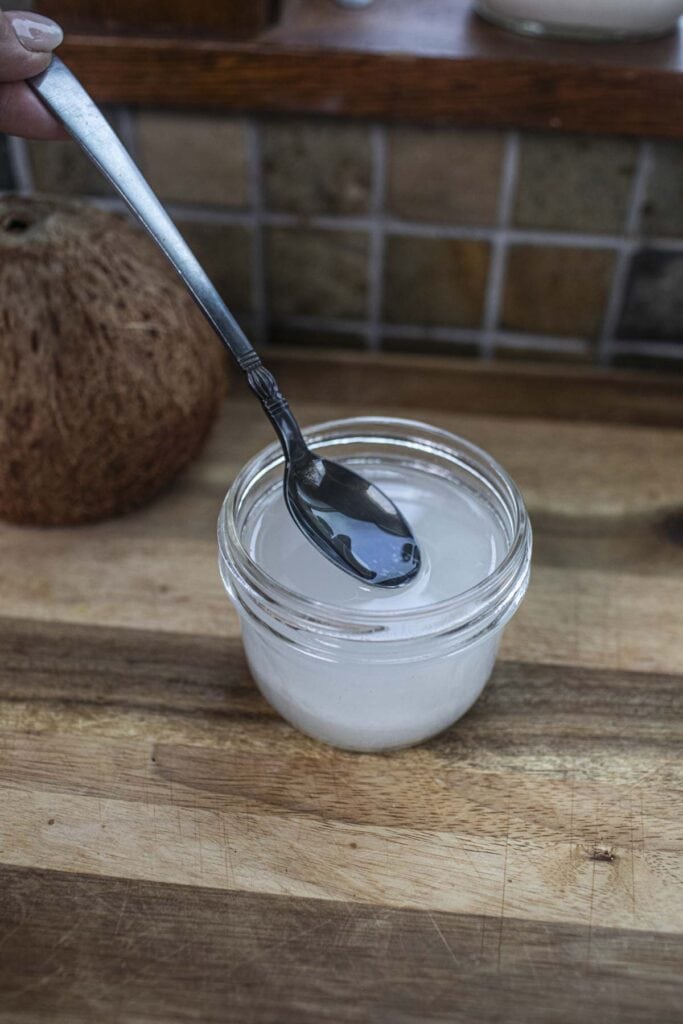
Steps:
1. Blend coconut butter with warm water.
Microwave or heat on the stove until the butter melts.
2. Allow it to cool, and use it for marinating meat or making a salad dressing. Done!
Tips and Tricks for the Perfect Coconut Milk
- Use high-quality water for better milk. Spring water or filtered water works best.
- Start with less water when making the milk, and add more if needed. You can always dilute it later.
- Keep your homemade coconut milk refrigerated in an airtight container for up to 3 days.
- Shake your milk before use if the oil separates from the water. This restores the creamy consistency.
- Don't waste the coconut pulp! Save it in the freezer for up to 6 months and use it in Thai recipes or to make homemade coconut flour.
- Tast the leftover coconut pulp for garnishes and toppings. Store them in the pantry or freezer for later use.
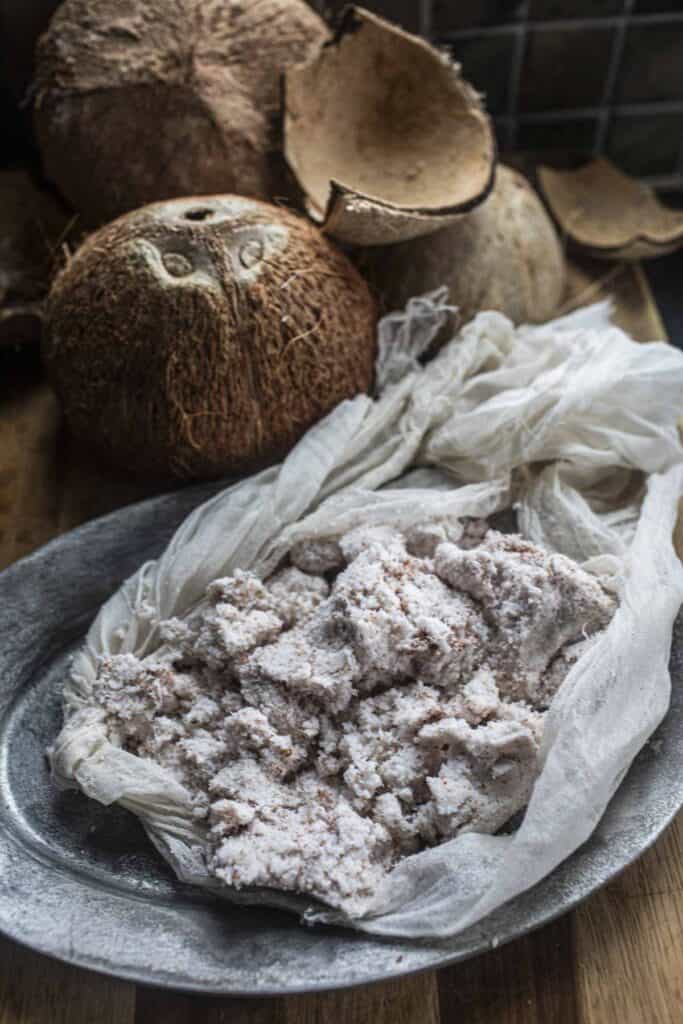
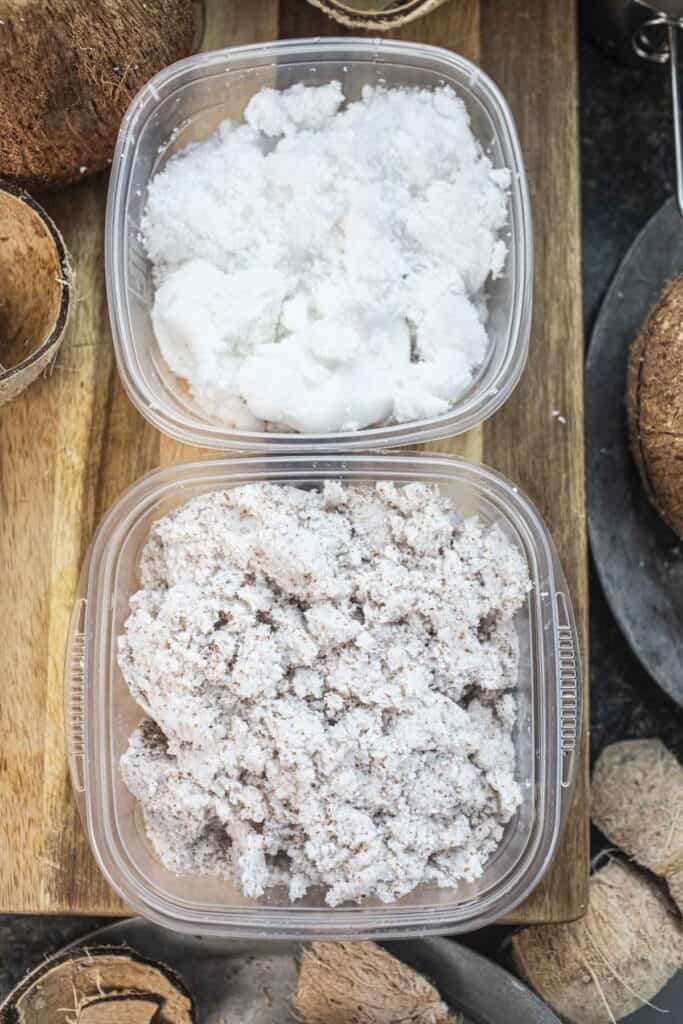
Thai Recipes Using Coconut Milk
- Thai curries. Thai red curry with kabocha squash, Kao Soi noodles, Thai yellow curry, Thai red curry, Penang curry, authentic Thai red curry, and Beef massaman curry.
- Thai soups with coconut milk. Tom Kha with chicken, Creamy Tom Yum soup, and Vegetarian Tom Kha.
- Thai desserts. Thai mango sticky rice, coconut ice cream, Kabocha squash in coconut milk, and Thai coconut custard.
Where Can I Buy Fresh Coconut?
Can I substitute coconut milk for other plant-based milk? Absolutely! Coconut milk can be used instead of regular milk (cow's milk), almond milk, oat milk, soy milk, and cashew milk.
You can find mature and fresh coconuts at most Asian markets, Whole Foods, Trader Joe's, or natural grocers. I was able to find mine easily at my regular grocery store.
Helpful Kitchen Tools for This Recipe
- A high-speed blender helps with blending real coconut meat.
- Use a nut milk bag, cheesecloth/muslin cloths, and a fine mesh strainer for optimal results and smooth coconut milk every time.
- A kitchen towel or many paper towels to clean up the coconut milk, especially if using real whole coconut. (:
- The suggested items above are affiliate links. I earn a very small commission from them at no extra cost.

Frequently Asked Questions
Your store-bought coconut milk can be left at room temperature until it expires. Fresh coconut milk should be kept in the refrigerator for two days.
Yes, you can freeze coconut milk. It is best to transfer it to an airtight container before freezing.
Yes, coconut palms are the trees that produce regular coconuts.
Fresh coconut meat can be eaten as snacks and used in curries, soups, desserts, and smoothies. Get creative and enjoy its versatility!
Coconut milk is a nutritional powerhouse. It is rich in lauric acid and healthy fats, making it a great addition to your diet. Try making your own coconut milk using various methods for a delightful and healthy experience!
Yes! Coconut products like coconut milk, flour juice, or yogurt are all gluten-free. Coconut flour is especially excellent for baking in gluten-free recipes.
Yes! Coconuts are great for those with vegan, low-carb, and paleo diets.
**Love a recipe you've tried? Please leave a 5-star rating in the recipe card below and a review in the comments section further down the page. Or follow me on Facebook, Pinterest, or Instagram!**
Print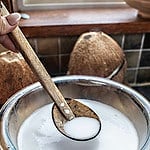
How to Make Coconut Milk (6 Ways!)
- Total Time: 20 minutes
- Yield: 1 cup
- Diet: Gluten Free
Description
Have you ever thought that making fresh coconut milk was difficult? Well, think again! Let's learn how to make homemade coconut milk in 6 different ways right in your own kitchen. All very easy and fast!
Ingredients
1. From a fresh coconut
Makes: 1 ⅛ cups of coconut milk
1 coconut 1.5-2 pounds each
1 ½ cups of water.
2. From desiccated/shredded coconut
Makes: just a little over 1 cup of coconut milk
1 cup desiccated coconut flakes
1 ¼ cups of warm water
3. From frozen shredded coconut
Makes: 1 ⅛ cups of coconut milk
8 ounces of the frozen coconut flesh. (Half a package)
1 ½ cup water.
4. From coconut powder
Makes: 1 ½ cups of coconut milk
1 cup coconut powder
½ cup water
5. From cartoned or canned coconut cream
Makes: 1 ¾ cups of coconut milk
8.5 ounces of coconut cream (1 small Chao Koh carton)
¾ cup of water
6. From coconut butter
Makes: Around ½ cup of coconut milk
⅓ cup coconut butter
¼ cup warm water.
Instructions
1. From a fresh coconut
The best coconuts for making coconut milk are from mature whole coconut. Learn how to pick the best coconut for making your own homemade coconut milk with these helpful tips.
Young coconuts are not recommended for this homemade coconut milk recipe as there's not enough cream or milk like those of fresh mature coconut meat.
Tools Required: Blender, muslin cloth.
Ideal For: Curries, soups and desserts
Steps:
1. Remove the coconut meat from the coconut shell and drain the coconut water. Use a sharp knife to shave off the brown skin from the coconut pieces, keeping only the white flesh.
2. Slice the coconut flesh into small pieces and add them to a powerful food processor. Add enough warm water to cover the top of the coconut.
3. Blend the coconut flesh with the warm water until smooth. Place a muslin or cheesecloth over a large mixing bowl and pour the coconut mixture to strain the milk.
4. Tie the top of the cloth tightly and squeeze out the milky liquid. Congratulations, you've made your own DIY coconut milk!
2. From desiccated/shredded coconut
Desiccated coconut is made by drying out coconut flakes to remove moisture. To rehydrate the flakes, we need to add water. It's important to use unsweetened coconut flakes for this. We want to make unsweetened coconut milk without any added sugar.
Tools Required: Blender, hot water, nut milk bag.
Ideal For: Versatile use in both sweet and savory dishes.
Steps:
- Soak the dry coconut flakes in warm water for 10 minutes.
- Add the entire thing to a medium food processor. Blend shredded coconut with water until smooth but still flakey.
- Strain using a nut milk bag, muslin cloth, or cheesecloth.
3. From frozen shredded coconut
You can get frozen shredded coconut at the Asian market, conveniently packed in vacuum-sealed bags in the freezer section. These small pieces of fresh coconut are perfect for various uses.
Tools Required: Blender, hot water.
Ideal For: Smoothies, desserts, beverages.
Steps:
1. Blend frozen shredded coconut with warm or semi-hot water in a medium-sized food processor. Blitz until smooth and milky with chunks of coconut pieces.
2. Strain using cheesecloth, muslin sheets, or nut milk bag.
Recipe Tips:
If you have any leftovers, simply store them in a zip-lock bag for future use. Personally, I find this method to be the second-best way to make homemade coconut milk.
Having some frozen shredded coconut as a backup is always handy when I run out of coconut milk from my pantry. They are also a great addition to my coconut products when I want to throw in some coconut chunks in some of my recipes.
4. From coconut powder
Coconut milk powder is made from dried coconut milk! It has been dehydrated for various uses. Many Indian and Malaysian recipes use coconut powder. It is the simplest and easiest way to make coconut milk - no blending, straining, stir and use!
Tools Required: Muslin cloth, cheesecloth or tree milk bag, hot water.
Ideal For: Quick coconut milk needs.
Steps:
1. Mix coconut powder with hot water in a medium mixing bowl. Use a whisk to stir. Allow it to sit for 10 minutes.
2. Before straining, stir the powder mixture one more time to lift the coconut milk deposit at the bottom of the bowl. No blender is needed for this method.
5. From cartoned or canned coconut cream
Coconut cream is the thick coconut milk at the top of your cans. To make coconut milk, simply dilute the coconut cream with water. Coconut cream is the first press of coconut milk, resulting in a rich and creamy texture perfect for heavier dishes and desserts.
On the other hand, coconut milk is the second press with a bit more water and coconut flesh, creating a thinner milk commonly used in curries, soups, and stir-fried dishes.
Tools Required: Muslin cloth, cheesecloth or tree milk bag, hot water. water.
Ideal For: 1 ¾ cups of coconut milk
Steps:
- Dilute canned coconut cream with water in a bowl. Whisk together for a minute. That's it. Done, Super easy!
6. From coconut butter
Coconut Butter is not my favorite, LOL! I admit I almost didn't include this method because it doesn't feel very Thai. But, surprisingly, it has some benefits.
Basically, it's like diluted coconut oil, perfect for making salad dressings that need a hint of coconut milk.
It's also great for marinating meats like satay chicken, making satay sauce, or marinating moo ping or Gai yang. However, it's not ideal for soups or curries.
Tools Required: Blender, hot water, fine mesh strainer.
Ideal For: marinating meat or use in coconut milk bases designs and sauces
Steps:
1. Blend coconut butter with warm water. Microwave or heat on the stove until the butter melts.
2. Allow it to cool, and use it for marinating meat or making a salad dressing. Done!
Notes
- Use high-quality water for better coconut milk. Spring water or filtered water works best.
- Start with less water when making coconut milk, and add more if needed. You can always dilute it later.
- Keep your homemade coconut milk refrigerated in an airtight container for up to 3 days.
- Shake your homemade coconut milk before use if the oil separates from the water. This restores the creamy consistency.
- Don't waste the coconut pulp! Save it in the freezer for up to 6 months and use it in Thai recipes or to make homemade coconut flour.
- Tast the leftover coconut pulp for garnishes and toppings. Store them in the pantry or freezer for later use.
- Prep Time: 15 minutes
- Cook Time: 5
- Category: How too
- Method: food processor
- Cuisine: Thai
** Thank you so much for visiting my blog! This is truly a passion for me. If you have enjoyed these recipes and appreciate the hard work I put into them, I would love it if you would share them with your friends! Your recommendation is the highest review I could hope for, and I’d appreciate it! **
Making Coconut Milk in My Village
Growing up in Thailand in a village filled with talented women, cooking played a significant role in our close-knit community. Food always took center stage whenever there were special occasions or important events like weddings, funerals, or ceremonies.
Without even needing to communicate, the women effortlessly knew their roles in preparing the meals. It was as if they were guided by an innate cooking instinct.
One particular task that I remember was making coconut milk. This was a dedicated station where we had to stay until the process was complete.
I wasn't thrilled about being assigned this task as a young child. I would have much preferred to engage in activities more suitable for kids rather than cracking coconuts and grating them with sharp tools.
Use a traditional coconut grater that is low to the ground. Sitting on the floor, I would grip a partially cracked coconut and grate away, occasionally hurting myself on the sharp teeth of the grater in the process.

It wasn't a pleasant experience, and it certainly wasn't anyone's favorite part of making coconut milk.
However, the magic happened after this painful step. The grated coconut meat would be mixed with water and pressed through muslin cloths, extracting thick, aromatic coconut milk.
The fragrance that filled the air was absolutely mesmerizing, especially if you were a fan of coconut. Being surrounded by such an intoxicating aroma was truly delightful.
The freshly extracted coconut milk would then be taken to another station and immediately used in dishes like Nam Ya and Gaeng Ped or for making Kanom (traditional Thai desserts).
Witnessing how this simple ingredient could transform into such flavorful and delicious dishes was amazing.
In our village, cooking brought us together and added an extra layer of meaning to our celebrations and gatherings. It was a time of shared traditions, culinary expertise, and the joy of creating meals that brought people closer.
Below is the traditional coconut grater with a sharp edge where the blades are used to grate the coconut meat. Look at those sharp edges!!


Related
Looking for other recipes like this? Try these




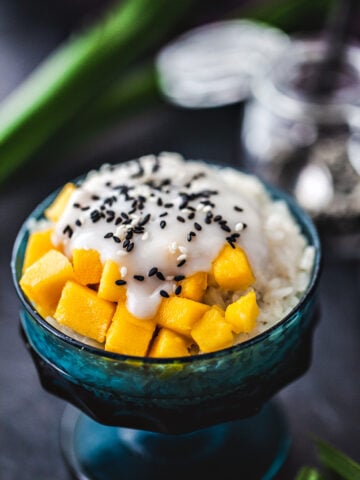

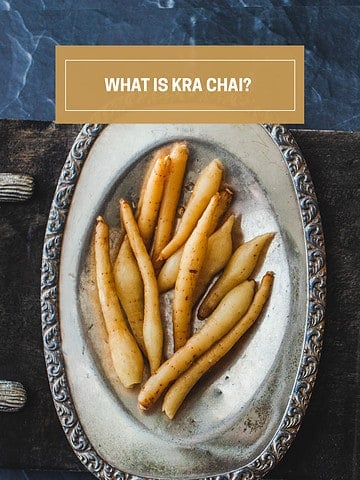


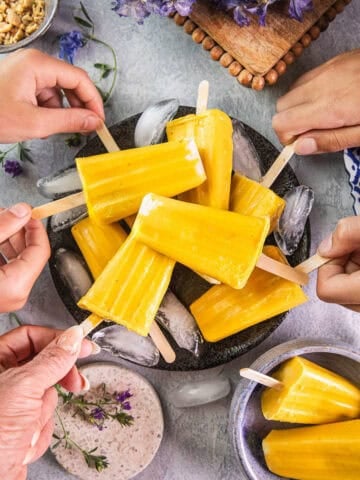



Chae says
Your through instructions give us confidence in attempting to do something we have never thought of doing on our own. We look forward to using the instruction to make the coconut milk next time we purchase coconuts.
We love your story about your childhood experience and giving us an insight into the world we've never experienced. Thank you.
C says
I love the story and picture of coconut grating. But I'm also glad you are showing us how to open coconuts safely! I'm so excited to make my own coconut milk and decrease my usage of the cans. The frozen coconut meat sounds like an option I can use a lot! ❤️
Cassie says
After trying our hands at opening a coconut, we had that awkward “what now?!” moment. This was so helpful and gave us a way to use the coconut without wasting it! I love the personal story about the grater too. Thanks for sharing!